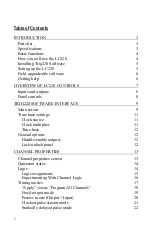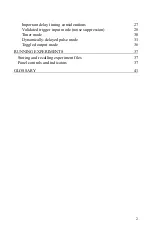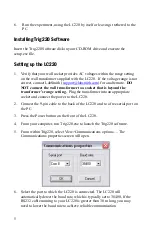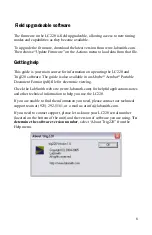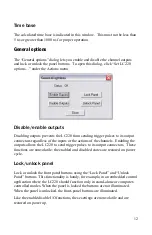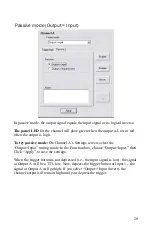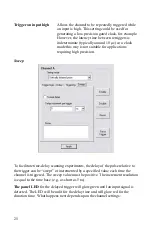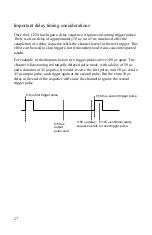
14
-
Enable
restores channel functions following a temporary disable. The
front panel LED for that channel will glow to indicate the channel's
status.
-
Disable
temporarily disables the channel. The channel remains fixed in
its “quiescent state” (see
Quiescent States
below). The front panel LED
for that channel will be unlit (See
Running Experiments: Channel
LEDs
).
-
Reset
reinitializes the internal trigger counters and sweep timing for the
current channel. This function can be called simultaneously for all
channels by pressing the “Reset” button on the main tool bar.
-
Force Trigger
lets you simulate a valid input signal for the channel
(see
Channel Properties: Logic
for more). This button, which is only
available with functions that
can
be triggered, is useful both for
troubleshooting your channel settings and implementing software
control of experiments. You can also force-trigger a channel from the
LC220 panel (See
Running Experiments: Force Trigger
).
Quiescent states
When you disable a channel, its input will not change the output. The “quiescent
state” of a channel is the setting of its output when the channel is disabled. You
can set each channel’s quiescent state to be a TTL high (3.5–5 V) or low (0–0.2
V) to provide a safe signal to the output device if you need to abort an
experiment or stops its progress.
The method for setting the quiescent state depends on the timing mode. Most
modes include an “Invert Output” option which sets the output normally High.
Logic
A channel can be triggered by logical combinations of signals from the inputs
and/or other channel output. Channel
logic
determines the combination of
signals that triggers the channel.
To define when a channel will trigger, open the channel’s Settings screen then
click the “Logic” tab. This tab only appears for timing modes which respond to
logic. You will select a trigger logic assignment for the channel from a list of
options.


